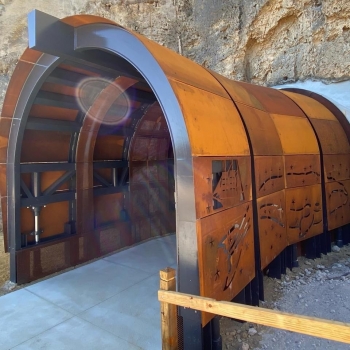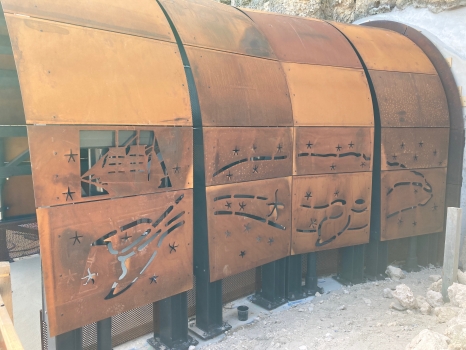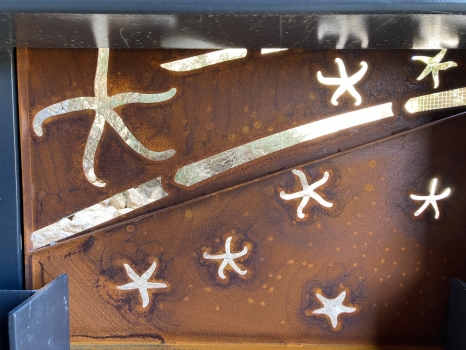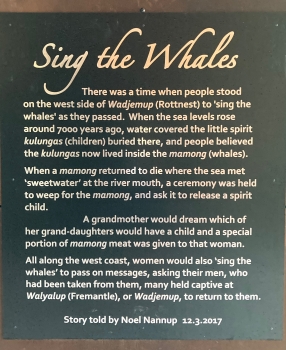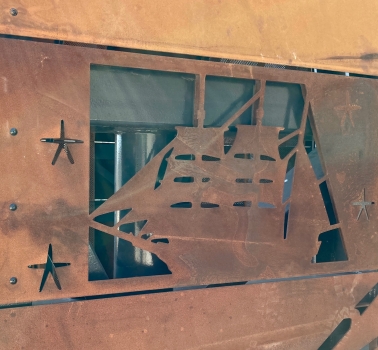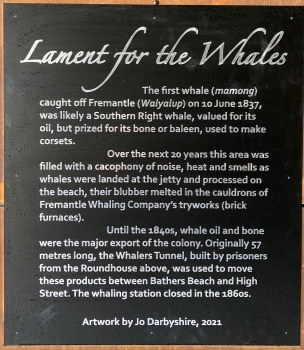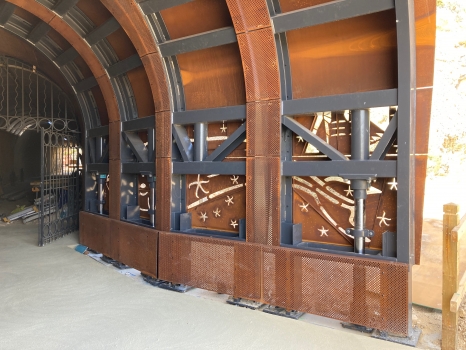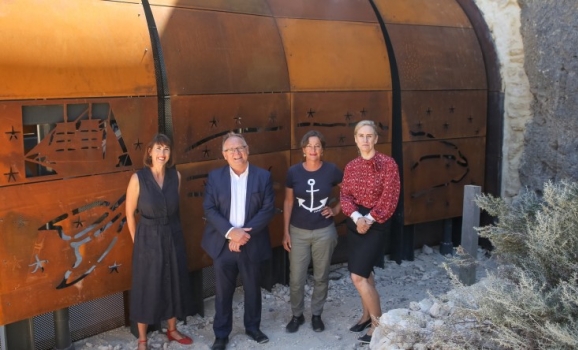Whalers Tunnel 2022
I was asked to design an artwork inspired by both the Indigenous and European history of Arthur Head for a new rockfall canopy, part of a project to reinforce the entrance to the Whalers Tunnel and stabilise the cliffs above.
At Bathers Beach in 2017 Whadjuk Noongar elder Noel Nannup shared a story with the Fremantle community about ‘singing the whales’, and he gave me permission to use the story for this project. The image of the Mamong, the Nyoongar word for whale, has been laser cut into the corten steel canopy. There is also an image of a European whaling ship. Within the whale are symbols of starfish, which represent the ‘kulungas’ or little spirit children, which Noel Nannup mentioned, that lived inside the Mamong.
Sing the Whales
There was a time when people stood on the west side of Wadjemup (Rottnest) to 'sing the whales' as they passed. When the sea levels rose around 7000 years ago, water covered the little spirit kulungas (children) buried there, and people believed the kulungas now lived inside the mamong (whales). When a mamong returned to die where the sea met ‘sweetwater’ at the river mouth, a ceremony was held to weep for the mamong, and ask it to release a spirit child. A grandmother would dream which of her granddaughters would have a child and a special portion of mamong meat was given to that woman. All along the west coast, women would also ‘sing the whales’ to pass on messages, asking their men, who had been taken from them, many held captive at Walyalup (Fremantle), or Wadjemup, to return to them.
Lament for the Whales
The first whale (mamong) caught off Fremantle (Walyalup) on 10 June 1837, was likely a Southern Right whale, valued for its oil, but prized for its bone or baleen, used to make corsets. Over the next 20 years this area was filled with a cacophony of noise, heat and smells as whales were landed at the jetty and processed on the beach, their blubber melted in the cauldrons of Fremantle Whaling Company’s tryworks (brick furnaces). Until the 1840s, whale oil and bone were the major export of the colony. Originally 57 metres long, the Whalers Tunnel, built by prisoners from the Roundhouse above, was used to move these products between Bathers Beach and High Street. The whaling station closed in the 1860s.
I also worked with Anne Brake from the Fremantle History Group on the text about the European history of the Whalers Tunnel, and local artist Rick Vermey on the necessary CAD (computer aided design) drawings.
The conservation works at Arthur Head were jointly funded by the City of Fremantle and the WA State Government.
